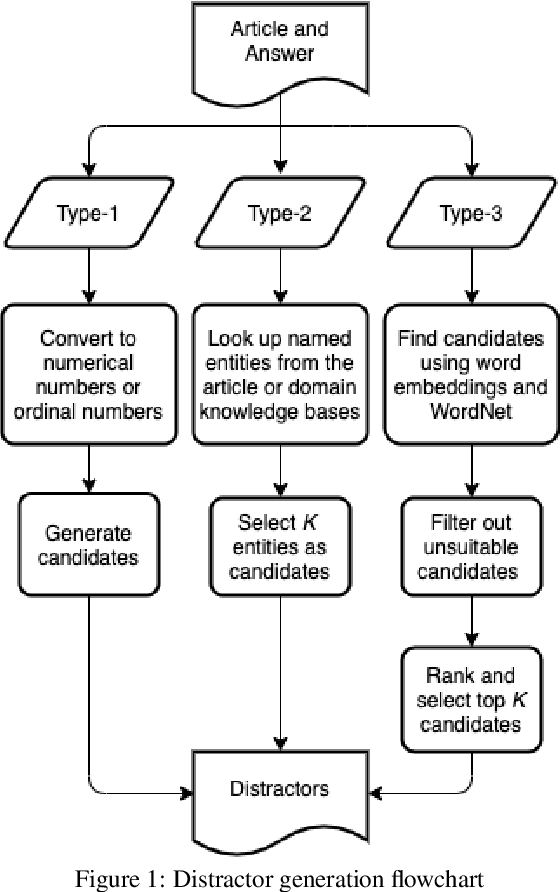Get our free extension to see links to code for papers anywhere online!Free add-on: code for papers everywhere!Free add-on: See code for papers anywhere!
Hejia Chen
Generating Adequate Distractors for Multiple-Choice Questions
Oct 23, 2020Figures and Tables:

Abstract:This paper presents a novel approach to automatic generation of adequate distractors for a given question-answer pair (QAP) generated from a given article to form an adequate multiple-choice question (MCQ). Our method is a combination of part-of-speech tagging, named-entity tagging, semantic-role labeling, regular expressions, domain knowledge bases, word embeddings, word edit distance, WordNet, and other algorithms. We use the US SAT (Scholastic Assessment Test) practice reading tests as a dataset to produce QAPs and generate three distractors for each QAP to form an MCQ. We show that, via experiments and evaluations by human judges, each MCQ has at least one adequate distractor and 84\% of MCQs have three adequate distractors.
Via
 Add to Chrome
Add to Chrome Add to Firefox
Add to Firefox Add to Edge
Add to Edge